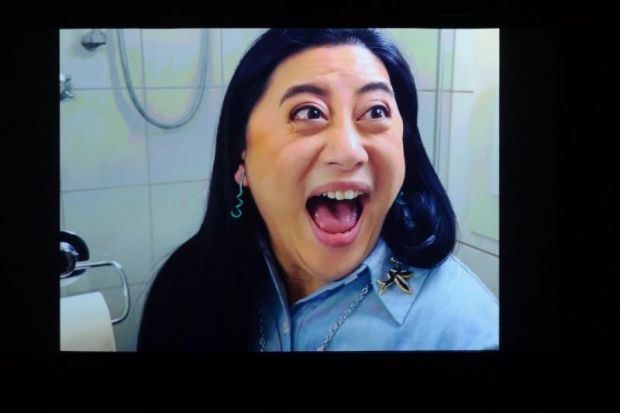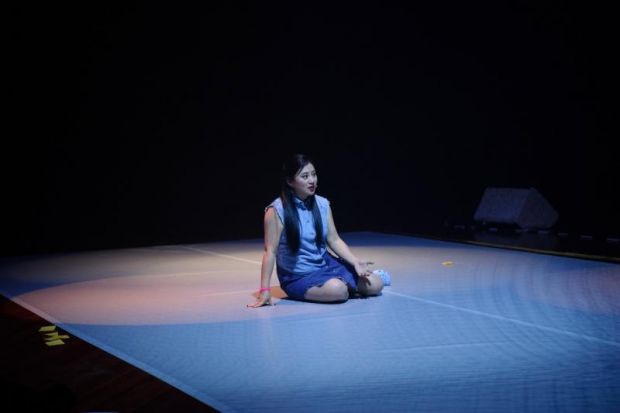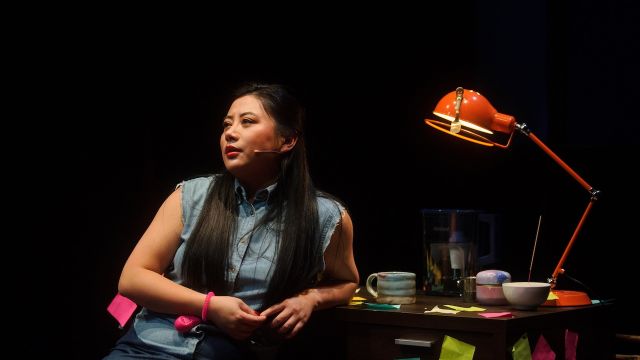How Do I Let You Die?
Semi-autobiographical How Do I Let You Die examines the ambiguity of living in secular Australia, subject to bushfires and everyday work, earning a living, bringing up children, and so on, and traditional Hmong beliefs that persist – stubbornly and necessarily – and of being Australian-born and knowing but not really sharing Hmong culture...
It’s February 2020 and Canberra is threatened by severe bushfires. In Melbourne, playwright Michelle Lee (played on stage by Alice Qin), worries about her elderly Hmong immigrant parents in Canberra. On a practical level, she worries that they have not made their formal wills - although it is quite clear that any money will go to the grandchildren.
This play (is ‘play’ quite the right word?) is essentially a monologue, which follows Michelle’s attempts to talk to her parents about death. Her title, redolent with meaning, suggests how she can – or might – understand and accept their deaths. She telephones them every day and speaks to them for about thirty minutes. She records these calls, and we hear brief extracts of the conversations, in a mixture of English and Hmong. Subtitles of their words and Michelle’s are projected on a large screen in English and Hmong text.

Alice Qin plays Michelle with a great deal of charm and authority. Alone on a floor level transverse stage, she narrates, she explains, she confides. Often, she exhibits a sort of exasperated humour that is central to the piece. ‘Michelle’ tells us that she wants to find a way to talk to her parents about death – that is, their Hmong beliefs and spirituality, their ghosts, their own and other family deaths they have witnessed and experienced since fleeing Laos and coming to Australia. She doesn’t really push this very far – seeming to accept politely but rather easily her parents vague or opaque responses - and so she doesn’t get very far.
Second (despite this) she tells us that she wants to write a play based on these conversations. An experienced produced playwright, she tells us that she was fired off two television projects about Hmong and Hmong ghosts. She doesn’t specify why she was fired. Perhaps her way of telling a story was not a great fit with television – or that the producers just didn’t get it. But the play suggests that, all said and done, Michelle doesn’t ‘get it’ either.
As a writer, Michelle accumulates numerous Post-It notes of facts and insights for her play. At the very end there is a lovely theatrical moment: a deluge of these Post-It notes falls on her like a shower of rain. But that follows a detailed factual demonstration of Hmong death ritual – which, ironically, Michelle appears to’ve known all along. It’s as if to say, ‘Okay, here’s the ritual, here’s what Hmong people do – but… does that help?’

The contrast between Hmong spirituality and Australian suburban life is made most clearly (and economically) by the little film – almost deliberately banal - which begins the play, and which continues at various points. It shows Michelle – polite but bemused - interacting with a Hmong ghost (played by the playwright herself), a spooky, but not very scary, pale-faced ghost in traditional dress, who appears to be shy, awkward and out of place – and there’s some welcome comedy when Michelle and the ghost dance to some pop music. (The filmmaker is Ari Tampubolon.)
Where the play, for all its multimedia inventiveness, is frustrating is that the Michelle character does not seem even to get close to achieving her objectives, or even defining what they are. On the phone, her better educated father is polite, self-deprecating but evasive, and her mother, much more holding to Hmong beliefs, also recedes out of reach.
Given the lack of a narrative story per se (which the playwright acknowledges), the monologue and the recorded conversations become repetitious, and we grow weary at the drawn-out (an hour and thirty minutes) dramatization of a playwright’s frustration. At the end we are really no closer to ‘Michelle’ or a way to talk about death or the Hmong than we were at the start. But is that the point?
Michael Brindley
Images: Alice Qin in How Do I Let You Die? by Michele Lee at Arts House. Photographer: Sarah Walker.
Subscribe to our E-Newsletter, buy our latest print edition or find a Performing Arts book at Book Nook.

